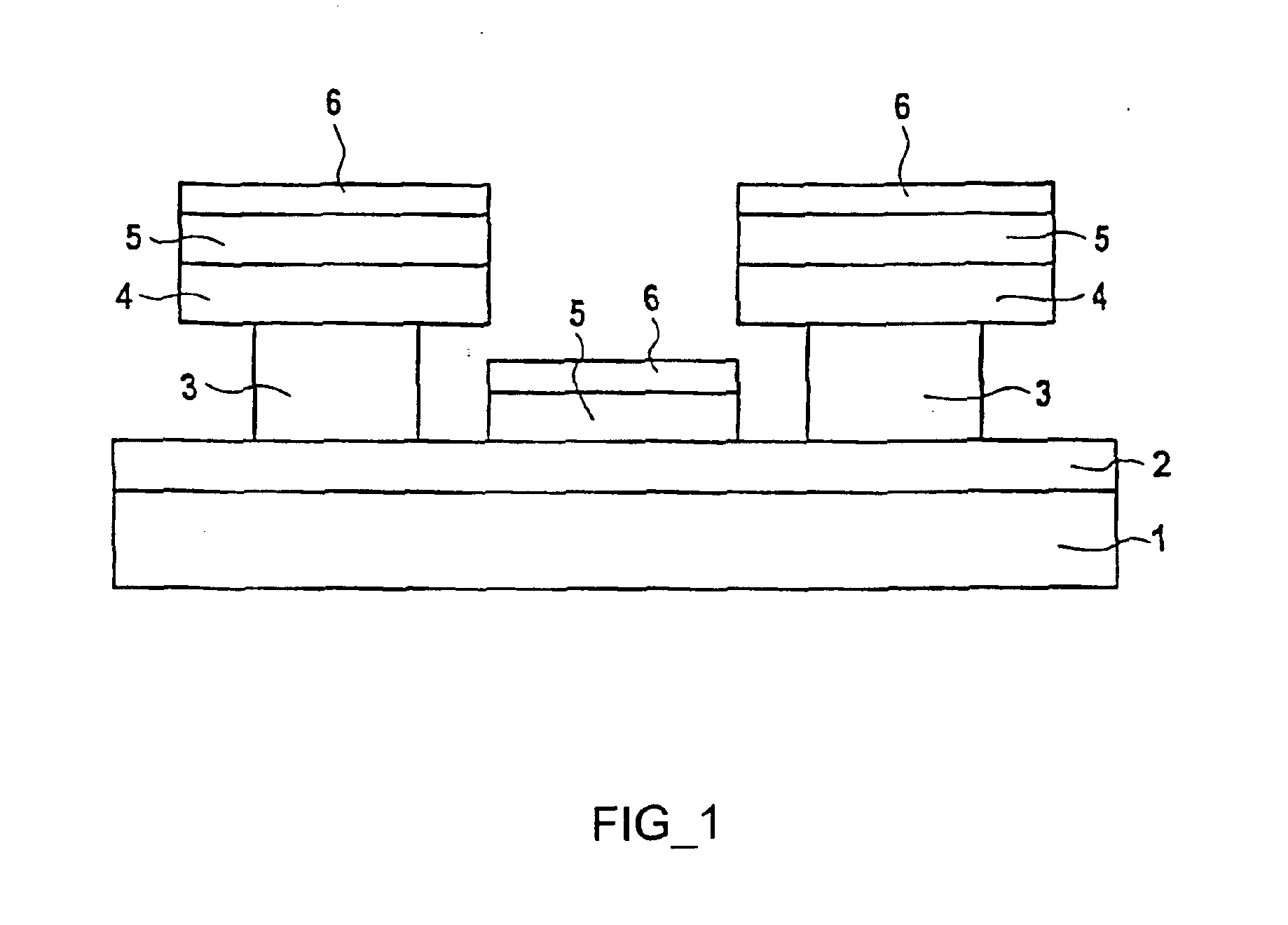Structured electrodes
- Summary
- Abstract
- Description
- Claims
- Application Information
AI Technical Summary
Benefits of technology
Problems solved by technology
Method used
Image
Examples
example 1
Production of an OLED Display
[0036]The production of a display utilizes the following method steps:[0037]1. An entire glass sheet is coated with indium-tin-oxide (ITO) and then structured according to a photolithographic method followed by wet chemical etching, in such a way that parallel conductor strips with a width of approximately 200 μm and a space of approximately 50 μm are formed. The photoresist used during structuring is then completely removed. The conductor strips are each approximately 2-cm long and include at their outer ends additions for external contacting if applicable.[0038]2. The glass sheet is heated for approximately 1 hour at a temperature of 250° C., then a commercial photoresist on the basis of polyglutarimide is spun on (application for a duration of 10 seconds at 700 rotations / minute, then spun off for 30 seconds at 3000 rotations / minute). The obtained layer is dried for 15 minutes at 150° C. and then for 30 minutes at 250° C. in a circulating air oven. A s...
example 2
Production of an OLED Display
[0041]A 1% solvent of an electro-luminescent polymer on the basis of fluorines in Xylole is spun on (4000 rotations / min, 30 s) a glass sheet with a produced layer build up corresponding to example 1. Subsequently, it is dried for 60 seconds at 85° C. Without the use of masking, a 100 nm thick layer of calcium is applied on the active area of the display by vapor deposition (deposition rate: 1 nm / s, pressure: 10−5 mbar). Without interrupting the vacuum, a 100 nm thick layer of silver is also applied on the active display area by vapor deposition (deposition rate; 1 nm / s, pressure: 10−5 mbar).
PUM
 Login to View More
Login to View More Abstract
Description
Claims
Application Information
 Login to View More
Login to View More - R&D
- Intellectual Property
- Life Sciences
- Materials
- Tech Scout
- Unparalleled Data Quality
- Higher Quality Content
- 60% Fewer Hallucinations
Browse by: Latest US Patents, China's latest patents, Technical Efficacy Thesaurus, Application Domain, Technology Topic, Popular Technical Reports.
© 2025 PatSnap. All rights reserved.Legal|Privacy policy|Modern Slavery Act Transparency Statement|Sitemap|About US| Contact US: help@patsnap.com


